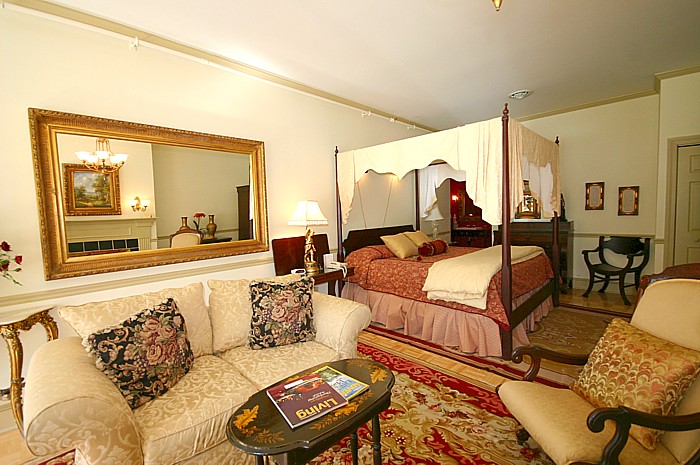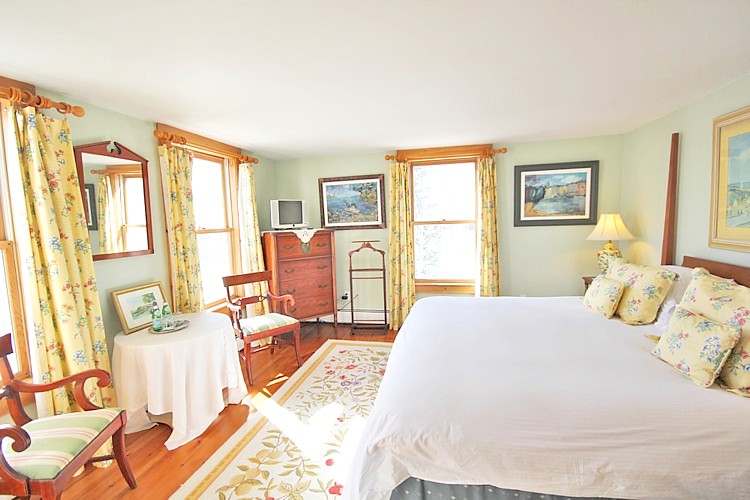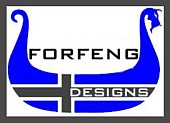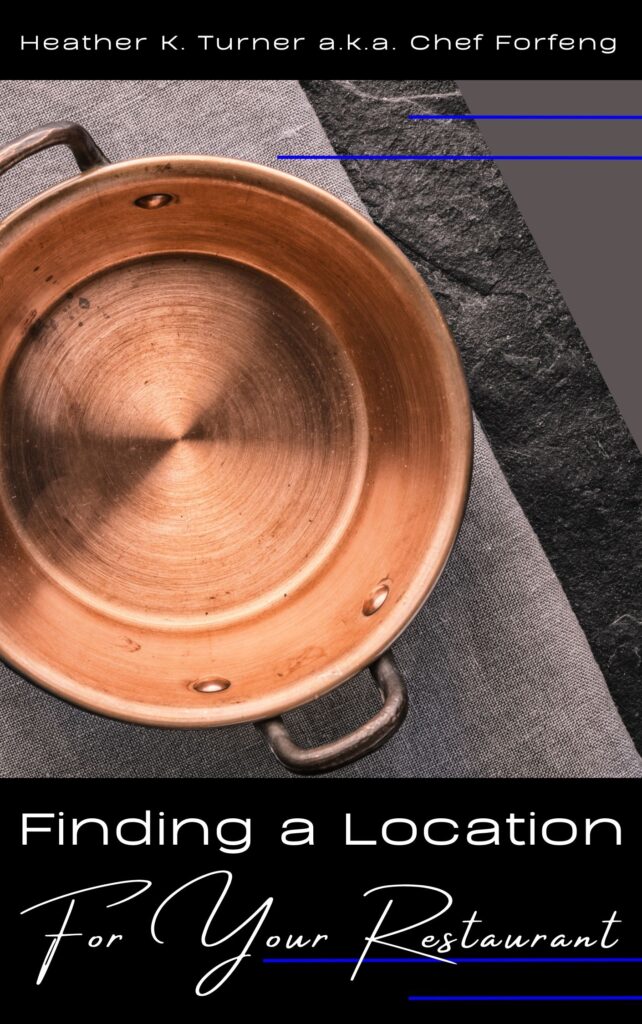by Heather T. | Jul 27, 2017 | Bed and Breakfasts, Lodging, Opinion
 Last week a rather nasty article got published online by Country Living Magazine, 6 Reasons Why I Will Never Stay at a Bed and Breakfast Again. I am not even going to go there in terms of what I think about the article or the author, read it yourself and draw your own conclusions, aside from wondering why it would take 2 years to write a snarky snippy article about a B&B you stayed at. There is always Tripadvisor to vent your wrath on (and no review there at that time mind you.)
Last week a rather nasty article got published online by Country Living Magazine, 6 Reasons Why I Will Never Stay at a Bed and Breakfast Again. I am not even going to go there in terms of what I think about the article or the author, read it yourself and draw your own conclusions, aside from wondering why it would take 2 years to write a snarky snippy article about a B&B you stayed at. There is always Tripadvisor to vent your wrath on (and no review there at that time mind you.)
There have been some great rebuttal articles on this; Dear Country Living Magazine: Point and Counterpoint and What a Bed and Breakfast Owner Wants You to Know About Staying at Small Inns, and I am sure there will be more as it hit a rather big nerve with the industry as a whole.
The article hit a nerve with me as well, as I work with and within the industry, I work with PAII which has been around for a long time, but mostly it hit a nerve because many of my personal clients are B&Bs, and very many of my friends are innkeepers, and that article portrays ALL B&Bs in a bad light, painting a very broad brush stroke across an industry that makes itself unique through it’s individuality. Plus using horrible Getty stock images to illustrate the article (and realistically people may think they were actual pictures of the inn) is pretty darn insulting. (unlike the stock photos in that piece, the photos in this are from real B&Bs, the top is from the 1896 House in Williamstown, MA, the others are from the Glynn House Inn in Ashland, NH and the Highland Lake Inn in Andover, NH, and I took them so I know they are realistic and true images of the B&Bs).
B&Bs are all unique, a few can remind one of an elderly auntie’s house, but others are art deco, to mid-century mod, to Victorian and some are much more modern. I’ve stayed in hundreds and hundreds of B&Bs over the years, and every single one is different.
In all of those stays I only have had two not so great experiences, one was at an inn someone else booked for me (and it would not have been my first choice based on their website, and looking at their reviews, and it was not horrible, just not my cuppa tea) and the second was the upstairs room above ours ended up being inhabited by a couple of drunken revelers who were practicing the art of gliding hotel (or B&B) furniture for most of the night, this was no fault of the B&B itself, just bad guests.
The quote from Terri Petrovits commentary, “Some people aren’t ‘B&B people,” is entirely true. People who like to stay at B&Bs, like to stay at them for a reason, because they are all unique, and you can find one or two, or a dozen to suit, where ever you like all over the world. Horsefarm B&Bs, stately historic homes filled with antiques, pet friendly B&Bs, Nautical B&Bs, upscale Lux B&Bs, Rustic B&Bs, B&Bs filled with knickknacks, Romantic B&Bs, Themed B&Bs and B&Bs filled with carefully chosen décor that is clean, sleek and modern. You name it, there is a B&B out there to suit, and if none of them do, then stay in a cold, boring hotel, and or a unregulated unsafe Airbnb, your just not a B&B person and that’s ok ?
 I’d just like to counterpoint some things from the article “6 Reasons Why I Will Never Stay at a Bed and Breakfast Again” so that when you are looking for a B&B to stay at, you know what to expect when you stay and book at one.
I’d just like to counterpoint some things from the article “6 Reasons Why I Will Never Stay at a Bed and Breakfast Again” so that when you are looking for a B&B to stay at, you know what to expect when you stay and book at one.
First “The early bird gets the scones”. B&Bs have set hours for a reason for breakfast, most will be very accommodating if you need to leave early, or miss breakfast, but you do need to try to let them know prior. Innkeepers work pretty much 24/7, when they are done with breakfast, they have to clean up, make beds, clean rooms, take reservations, engage with guests, and all the rest of the million things one has to do to run a business full time, they can’t just sit around in the kitchen all day waiting for stragglers. Running a real B&B bears absolutely no relation to the Newhart TV show.
In the couple of instances, I’ve missed breakfast, (i.e. staying up very late the night before working on a presentation) the innkeepers have gone out of the way to rummage me up some homebaked muffins and fresh fruit. This is more than you would ever get at a restaurant (or a hotel) if you showed up after service was over.
“Awkward conversations over breakfast”. B&Bs are all different, some have communal dining tables, some have individual tables within a dining room (how this is terribly different from sitting in a hotel restaurant, aside from B&Bs having much better food and better service etc. is beyond me.) But if sitting at a communal table is not your fancy, find out first, most B&Bs have dining room photos on their websites, and you can always ask. My husband refuses to stay at a B&B with me that has a communal table, because he doesn’t want to socialize, I personally love it. Ask. It’s YOUR vacation.
“Where’s my coffee?” I like strong coffee; my favorite is the kind where the spoon can stand up in it. But not everyone does. Every B&B I have ever visited serves a different brand of coffee, and a different strength of brew.
Ok, coffee too strong, or coffee too weak? How about you ask the innkeeper for something else, or another cup of differently brewed coffee. I’ve been in several B&Bs where I considered the coffee a bit on the weak side, but it appeared most of the other guests were sucking it down happily, so I asked nicely and guess what? The innkeepers made me another pot! Perfection! And by the way, many B&Bs have self-service Keurig machines, so you can get your caffeine fix at any time.
 “The rooms are from another decade”. Now this one is VERY broad generalization of the industry, and quite frankly downright wrong. While some B&Bs are old fashioned and have antiques in every room, and yes, a few do still have doilies, many of them do not. Of the 2 dozen B&Bs I’ve stayed at in the last year, only one would I call a doily inn, and I don’t mean that as a sarcastic or nasty statement. The inn was decorated with 50s chic, and I adored it. It was quaint, it was comfortable, the bed was one of the most comfortable I’ve ever slept in, the pillows were to die for, the rosemary hand soap was so lovely smelling I wanted to eat it, the innkeepers adorable (they were in their early 70s) and the breakfast incredible. I usually prefer more modern B&Bs and many B&Bs are. I stayed in a B&B last month that was luxury defined; soaking tubs, Molton Brown Amenities, Ceccotti furniture, Silk-bamboo bathrobes and truffled eggs for breakfast, and Innkeepers in their mid 40s. Innkeepers run the gamut of ages from 30s to 70s, and their B&Bs run the gamut of tastes and styles. That’s part of the appeal of B&Bs. Uniqueness.
“The rooms are from another decade”. Now this one is VERY broad generalization of the industry, and quite frankly downright wrong. While some B&Bs are old fashioned and have antiques in every room, and yes, a few do still have doilies, many of them do not. Of the 2 dozen B&Bs I’ve stayed at in the last year, only one would I call a doily inn, and I don’t mean that as a sarcastic or nasty statement. The inn was decorated with 50s chic, and I adored it. It was quaint, it was comfortable, the bed was one of the most comfortable I’ve ever slept in, the pillows were to die for, the rosemary hand soap was so lovely smelling I wanted to eat it, the innkeepers adorable (they were in their early 70s) and the breakfast incredible. I usually prefer more modern B&Bs and many B&Bs are. I stayed in a B&B last month that was luxury defined; soaking tubs, Molton Brown Amenities, Ceccotti furniture, Silk-bamboo bathrobes and truffled eggs for breakfast, and Innkeepers in their mid 40s. Innkeepers run the gamut of ages from 30s to 70s, and their B&Bs run the gamut of tastes and styles. That’s part of the appeal of B&Bs. Uniqueness.
“There are few modern amenities” Another VERY broad generalization of the industry. Most B&Bs have TVs and many of them are quite large (but generally tastefully staged), rooms may also include smart phone docks, and other modern electronics, and did I mention WIFI? Most B&Bs have free WIFI, vs hotels where you have to pay through the nose for it, and most times it’s horrible, or an Airbnb where WIFI may be totally nonexistent.
Yes, there are B&Bs with no TVs or small TVs, but some people want to go on vacation and turn technology off, the tiny TVs are there for those that “have” to get their fix. If having cable access is so important to you, that you need to have it on while on vacation in the first place, maybe you need to rethink that just a little, and maybe you should check out the website, look at the room photos and read the descriptions. If you can’t see or read online that they have or have not 100 inch screen TVs, and it’s that important to you, Ask!
The referenced electric fireplace you probably won’t run into in most B&Bs, and if you do and have an issue with it, please save yourself a second bad night of sleep (unlike this lady) and enquire about it with the innkeepers after the first night, instead of bemoaning two nights of it. Or 2 years later……..
 “They’re overpriced”. Yet another VERY broad generalization of the industry. Yes, there are pricey B&Bs out there, but most are quite affordable for what you get, they are generally cheaper than hotels and while you may say, “stay at an Airbnb, it’s cheaper!” Look carefully at the comparable rates, Airbnb rentals are generally equivalent in price, if not more money than a B&B, when all the costs associated with it add up. Fees to Airbnb, plus base rate, plus most have cleaning fees. So, your $99 per night Airbnb rental gets a $50 dollar per night cleaning fee tacked on, plus the 6% – 12% fee that Airbnb tacks on, that’s a bit more expensive than a local B&B at a $130 per night for example (read the fine print in the Airbnb listing). And B&Bs have things that most Airbnbs do not, they are inspected and insured, and their fire alarms work for example, add delicious homemade gourmet breakfasts (or you can have your Cheerios in an Airbnb). And in case of an accident a real B&B has liability insurance, ask the next Airbnb host you go to if they have it, and consider what would happen to you and your family in case of a fire, or an accident at the rental for example.
“They’re overpriced”. Yet another VERY broad generalization of the industry. Yes, there are pricey B&Bs out there, but most are quite affordable for what you get, they are generally cheaper than hotels and while you may say, “stay at an Airbnb, it’s cheaper!” Look carefully at the comparable rates, Airbnb rentals are generally equivalent in price, if not more money than a B&B, when all the costs associated with it add up. Fees to Airbnb, plus base rate, plus most have cleaning fees. So, your $99 per night Airbnb rental gets a $50 dollar per night cleaning fee tacked on, plus the 6% – 12% fee that Airbnb tacks on, that’s a bit more expensive than a local B&B at a $130 per night for example (read the fine print in the Airbnb listing). And B&Bs have things that most Airbnbs do not, they are inspected and insured, and their fire alarms work for example, add delicious homemade gourmet breakfasts (or you can have your Cheerios in an Airbnb). And in case of an accident a real B&B has liability insurance, ask the next Airbnb host you go to if they have it, and consider what would happen to you and your family in case of a fire, or an accident at the rental for example.
I have yet to stay at hotel aside from several very expensive ones that match the amenities that a B&B has to offer, plus I’ve never stayed at a B&B where you get tagged for using the bottled water in a room at $5 a pop, or a bag of M&Ms for $3.50 unlike at a hotel. Instead at a B&B there are usually beverages available all the time, and free homemade cookies as well. I have yet to stay at a hotel where I have ever had a decent breakfast. Chefs don’t work breakfast at a hotel (I’ve worked in a few so I know the skinny), lowly paid line cooks do, so if you want rubbery scrambled eggs, stay at a hotel instead of a B&B. Even the luxury hotel I stayed in last month in Massachusetts had a horrible breakfast, and I had to pay separately for it to boot.
If you want an ideal B&B stay, do a little homework in advance. Look at the website, look at the pictures, read the descriptions, I have yet to see a B&B website that doesn’t state what size bed is in the room. Take a few minutes and go to Tripadvisor, Google and Yelp and read the reviews first. Are there management responses? Check out their social media! If you buy a new car or new stove hopefully you check out the reviews and reliability first before you spend money. If you are going on vacation and you want it to be nice, take a few minutes and do your homework first.
If you have questions that are not answered on the website, Ask! Pick up the phone or send an email.
If you have an issue at the time of your stay, please mention it to the innkeepers at the time, please don’t wait two years to blindside them with the fact you had some issues with your stay (Or you “think” you had some issues with your stay, and perhaps two years later these were a little confabulated? Or perhaps memory has played fast and lose with a few details for the sake of a snarky article?).
The very biggest and most oft repeated complaint I get from innkeepers when I help them figure out how to respond to online reviews properly, is that guests who may have had an issue with something, didn’t mention it at the time of their stay, so it could be corrected or fixed at the time.
I have never stayed at a B&B where I had a small (or even large) problem and I mentioned it to the innkeepers and they didn’t try to fix it right away. If you don’t even try to say something, then don’t assume they just “know”, and don’t assume right off they won’t try to fix it.
B&Bs and their innkeepers pride themselves on service and hospitality. Innkeepers are not hotel front desk clerks who generally don’t care, innkeepers take pride in their B&Bs because it’s their livelihood.
It reminds me of people who used to come eat at my restaurants who would lick the plates clean, tell the waitstaff everything was fine and dandy, “Just lovely!”, and then leave a scathing review about how they didn’t get enough herb butter for their ciabatta rolls, and the salad dressing had way too much garlic in it, so it was almost inedible (funny since they ate it all). Thankfully I only ever had a couple of those, but I feel the innkeepers pain on this point. If your room is too cold or hot or whatever, mention it, give the innkeepers a chance to at least make it right. While innkeepers are excellent hospitality hosts, I have not yet met any of them that could mind read.
Bed and Breakfasts are unique, they are all different, the innkeepers are all different, it’s one of the pleasures of staying at a B&B, because they are not cookie cutter. (But they always have excellent homemade cookies :).
I prefer staying at a B&B vs a hotel for a million reasons, food and comfort are key, to name a couple of big points. I will never stay at an Airbnb, because I for one am concerned about things like; does the smoke alarm work? What happens if the host’s dog bites me? What happens if I get food poisoning from food they have made me, or food that’s been improperly stored in the house? Am I covered? Is it safe?
Inns and B&Bs are insured and inspected, and that makes additional reasons to stay at them in addition to the great food and hospitality that most B&Bs offer.
Please don’t take one unhappy person’s snark at a B&B she stayed at years ago as a representation of our industry as whole, it’s an opinion article and she had her own opinion, not every B&B is perfect, but the vast majority of B&Bs out there try. Do your home work before you stay, whether it be at a hotel, motel, Airbnb or real B&B, and say something if you have an issue no matter where you stay, while you stay, not after. I challenge you to form your own opinions about the B&B industry, and love it as much as I do.
by Heather T. | May 16, 2017 | Bed and Breakfasts, Lodging, Marketing

We recently did a VERY well received webinar at PAII (Professional Association of Innkeepers International) on how to “game” Airbnb, “Airbnb is the frenemy of the legal B&B / Inn world. And while we won’t say, “If you can’t beat them, join them”, we will say, “Keep your friends close, and your enemies closer.” If you look at Airbnb as an opportunity because it is cheaper to deal with than most OTAs, take advantage of it and we mean “take advantage” in the purest sense of the word. The non-legal, non-inspected properties are using it, and while we here at PAII are working hard with AHLA to level the playing field so that Airbnb hosts are paying their fair share, let’s not miss an opportunity while we fight. Learn how to leverage an Airbnb listing properly to be able to compete – and beat – those Airbnb illegal rentals stealing business from your property. Learn what pictures, text and additional information to include to make a stand-out Airbnb listing over those that are not legal, while educating the public about why staying at a legal B&B has a lot of benefits over the non-legal listings.”
The recording is available in the member’s section of the PAII website.
Here are notes from the webinar, gleaned from talking to many B&Bs who are listing, including inn clients who I help manage their listings, and also talking to many very successful Airbnb hosts as well.
Gaming the Algorithm
- Respond Quickly to every inquiry, Airbnb gives preference to hosts that respond within an hour of email, Even a quick “we will get back to soon with more information” stops the clock.
- Actively manage your availability calendar, make a few small changes at least once a week.
- Link your account to social media, Twitter and Facebook.
- SEO your listing, Create a Headline that’s SEO friendly “Hudson Valley Romantic Suite”, Not “Charming Victorian Mansion in the Heart of the Valley”.
- Be location and accommodation specific, don’t use catchy phrases or jargon.
- Do a Google search for relevance, when you label photos of the area, Google Search your description.
- Share your listing online, FaceBook, Twitter, Google+ etc. often.
- Review the calendars for each competitor properties, see what their actual prices ranges are, Do a spreadsheet of your competition, high rates, low rates, specials.
- Link your account to social media, Twitter and Facebook.
- You have fifty words to get the basics across, look at the area competition and focus on what they DON’T offer.
- What are your five best selling points?
- In the end of your description add a call to action. “We book up fast for the weekends, Email us now to guarantee your reservation” or offer a deal, don’t forget if you have specials or offers you can mention them here.
- Make sure your profile photo is SMILING!
- Fill out your personal profile giving as much background as possible, the more professional and hospitality related the better.
- Don’t put your lowest price and lowest price room on, you get the deal seekers and the ones who want to negotiate.
- Remember use this as a directory that’s good for SEO, don’t expect to get a lot of business from it, but you can if you leverage it correctly.
- Don’t forget to highlight the legal aspects of the B&B, licensed, insured, plus no room cleaning fees (it is included), Repeat guests won’t book through Airbnb again, they will book direct to avoid having to pay the service fee. Make sure you capture their email address when they come to stay.
Photo Tips
- 12-15 photos, min. of 5 to show up in mobile search results.
- 1024 x 683 pixels is the best sizing for listings.
- Your most important photo is your primary photo, if it’s not interesting enough to click through people won’t, put your best photos first in the listings.
- Bathroom photos are important.
- Add text and annotations to your photos to highlight certain aspects.
- Take your photos in landscape format: Vertical photos won’t showcase your space as well.
- Use catchy captions on photos, instead of “This is the dining room” jazz it up a bit like “Awake after a good night’s sleep to a delicious homemade breakfast, our Pecan Waffles are a signature recipe!”
- Non-cluttered rooms get the most bookings.
- The biggest mistake B&Bs do on is just show just the room that’s available, add area photos and photos of the rest of the house and exterior including some highlights of things to do in the area.
- Add screenshots of some of your reviews from Tripadvisor, make sure you highlight unique things at your B&B and in your area.
Airbnb resources:
Winning the Battle with Airbnb
Jack North, Mayhurst Inn https://paii.wildapricot.org/resources/Pictures/GET%20A%20VICTORY%20IN%20THE%20WAR%20AGAINST%20AIRBNB.pdf
Online Photo editors
Use composite/collage photos to show multiple aspects of your neighborhood around your B&B in one picture
Showcase your high speed WiFi network by doing a speedtest and adding a screenshot of the results to your listing
A good Internet connection speed varies depending generally in the number of users and the functions of the connection, however, 8 megabits per second is usually considered decent. Connection speeds less than 8 megabits per second are considered slow. There are cable broadband speeds capable of moving at 100 megabits per second.
Display the layout of your house by creating a floor plan
Online Free Planners
Smartphone Apps
by Heather T. | May 9, 2017 | Bed and Breakfasts, Blog, Lodging, Websites

Many of the reservations systems offer their reservations systems tied in with website development as well as companies that specialize in webdesign only. There are also hotel specific website designers, and many hundreds of smaller independents out there. Below is a list of “some” of the better known Bed and Breakfast specific web design companies out there.
Website Designers Specializing in the Hospitality Industry/Bed and Breakfast Industry:
Acorn Internet has put together a very good RFP (Request For Proposal) sheet that innkeepers can use if they are considering having a website built or redone. That can be found at http://acorn-is.com/pdf/questions-to-ask-a-web-company.pdf, and they have some additional pointers with videos at https://acorn-is.com/how-to-choose-a-web-company.htm that are very helpful.
Pricing for a good B&B website can range dramatically, anywhere from $2,500 up to $15,000, if bundled with additional options like photography, social media management and reservations systems.
Some key points to consider when choosing a website designer, many of them touched upon in Acorn’s sheet.

Make sure you own your website and it can be transferred. Some of the web developers out there own the content, and make it almost impossible to transfer to someone else to maintain. Some website options like YP (Yellow Page) websites, you don’t own the content, and you don’t own your domain name, and you can’t transfer content to someone else.
Many inns go with smaller local companies to save money, or because they prefer to work with someone locally. This unfortunately can have some downsides, the web developer may not have experience in the innkeeping industry and know what sells and what doesn’t. Many of the web design companies specializing in the B&B industry have hospitality backgrounds, including some who are former innkeepers. If you are using a unknown web developer, and there are some excellent ones out there, make sure they understand and get to know the industry first.
Don’t just ask for references and examples (make sure they are current live websites) from the web developer. Do a search on Google for the developer as well. Check out review sites, as well their social media accounts, like Facebook and Google+ where there may be reviews. You will get the best search returns if you Google their business name in quotes, so “Jane Doe Webdesign” and “janedoewebdesign.com”. Googling the phone number in quotes as well can also bring up additional results, “800-555-1212” and checking out the Better Business Bureau’s website doesn’t hurt.
http://openlinkprofiler.org and https://moz.com/researchtools/ose/ are two free sites you can use to check who links back to the web designers. Find out who else they did website designs for prior, and make some phone calls. The references they give are going to be the happy customers who will give them sterling reviews. Make sure you do your homework first, it’s a huge outlay of money to spend, plus you need to know whether a promise to finish a website in 3 months, when you officially open your doors to the public for the first time, is really going to be ready and online by then.
Look at the sites they have done, the ones in the online portfolios and the ones you have found in search. Do you like any of them? Bookmark ones you like for reference, even if you don’t use the designer, it can help whoever you do end up with get an idea of your preferences.
If a web developer offers to set up, as well as maintain your social media channels, check out their own social media channels first, before handing over the reins to them. Do they have quality followers? Are their own accounts optimized? And even being used?
Fans and followers on Facebook, Twitter and Instagram can be bought, but it’s fairly easy to see whether the account has invested in “junk” followers, a Facebook page with posts, won’t have any likes or comments on posts. With Instagram and Twitter, you can look at the followers themselves, and its easily apparent they are fake/spam accounts.
If they do offer to manage your social media, a couple of things to be cognizant of; have they managed other B&B Accounts before, and ask them for references for them. What kinds of things are they going to post, and what is the plan for what they will do if your business accounts get trolled, or you have a problem customer to deal with? Unless you completely trust their judgement, you should see all posts before they are made public.
Keep in mind giving them access to your accounts also means they can delete your social media accounts, and those are not recoverable. It has happened where management and marketing companies have deleted social media accounts they have access to, if a rift happens between themselves and the business. If you do want to allow them access to your Facebook account to post, make sure they have “Editor” access only. Just because a Facebook Business account can now be recovered within 14 days of being deleted, if someone has admin access to the page, they can easily kick you off as “owner” of the page, and then you don’t have the access to “undelete” it.
One other key point to note when using a web designer for a new site or redesign. Make sure you own and have access to your domain name. The domain renewal should go directly to you. Web designers may need access to the domain name in order to repoint DNS settings, or add email or other settings depending on hosting services, but if you give them access, make sure you check after the changes have been made that all of the information in there is exactly as you left it, and change your password. They do not need ongoing access to your domain, and there have been many cases of a domain name being held hostage, or a company going out of business, and domain name access becomes inaccessible.
If you do have a friend, relative or other person you trust to do the domain name registration and renewals, make sure you have emergency access to the domain registrar, just in case, and find out what their plan is if anything should happen to them.
A few additional questions to ask references (supplied by the designer or by references found on the web)
- Do they only talk in “Geek Speak” and will they explain things in laymen’s terms?
- Do they quickly respond to emails and phone calls?
- If they offer bundling of services, what are their strengths and weaknesses?
- Are they amicable to suggestions from the B&B? While most professional web designers know what works, and what is possible and impossible, having some input in the finished product is extremely important.

DIY (Do It Yourself) Website Builders
While we recommend going with a web developer who knows the B&B industry to develop or redo your website, we do know that in many cases, B&Bs may not have the budget to do, or redo a site for several years unless they can specifically save up for it, or have the funds in hand. With the growing importance of travelers needing to be able to view a B&B’s website on their mobile devices, as well as a site’s mobile presence impacting Search Engine Optimization, sometimes a DIY site may be the only option in the interim of getting it professionally done.
Stay away from sites where you don’t own your own site or domain name. Be aware of addons. A free site may give you free hosting, but cost you extra to point a domain name (that you have already paid for) to it, or there may be additional fees for addon options.
Here are some of the mobile friendly, free (but some with paid options) and affordable options for DIY websites out there.
If you decide to go the WordPress.org website route, make sure you buy a template from a legitimate company, https://www.elegantthemes.com, https://themeforest.net, https://themify.me and https://mojomarketplace.com are some of the best places to find themes. While there are thousands of themes out there, many of them free, they may not be safe to use, and have backdoors in the themes that can let your site get hacked. Be very wary of installing plugins as well, unsafe plugins as well as ones incompatible with the most current WordPress updates can cause huge issues with your website.
Make sure if you are maintaining your own WordPress site you also investigate how to back it up, if your hosting backs it up and make sure you back up any time you have made changes to it, or before installing any major updates. WordPress and plugin upgrades have been well known to crash a website.
In looking at WordPress themes look at the ratings and any complaints people have, its also wise to demo a theme as well in advance of purchasing it if possible. While most themes are under $100, many of the theme designers have “samples” up that are done by professionals. Someone with just enough knowledge to navigate and edit a basic WordPress site may know just enough to customize the theme but not to get to the point of the “sample” done up by a designer and may be rather disappointed that the template they buy doesn’t end up looking like they thought it would.
 Last week a rather nasty article got published online by Country Living Magazine, 6 Reasons Why I Will Never Stay at a Bed and Breakfast Again. I am not even going to go there in terms of what I think about the article or the author, read it yourself and draw your own conclusions, aside from wondering why it would take 2 years to write a snarky snippy article about a B&B you stayed at. There is always Tripadvisor to vent your wrath on (and no review there at that time mind you.)
Last week a rather nasty article got published online by Country Living Magazine, 6 Reasons Why I Will Never Stay at a Bed and Breakfast Again. I am not even going to go there in terms of what I think about the article or the author, read it yourself and draw your own conclusions, aside from wondering why it would take 2 years to write a snarky snippy article about a B&B you stayed at. There is always Tripadvisor to vent your wrath on (and no review there at that time mind you.) I’d just like to counterpoint some things from the article “6 Reasons Why I Will Never Stay at a Bed and Breakfast Again” so that when you are looking for a B&B to stay at, you know what to expect when you stay and book at one.
I’d just like to counterpoint some things from the article “6 Reasons Why I Will Never Stay at a Bed and Breakfast Again” so that when you are looking for a B&B to stay at, you know what to expect when you stay and book at one. “The rooms are from another decade”. Now this one is VERY broad generalization of the industry, and quite frankly downright wrong. While some B&Bs are old fashioned and have antiques in every room, and yes, a few do still have doilies, many of them do not. Of the 2 dozen B&Bs I’ve stayed at in the last year, only one would I call a doily inn, and I don’t mean that as a sarcastic or nasty statement. The inn was decorated with 50s chic, and I adored it. It was quaint, it was comfortable, the bed was one of the most comfortable I’ve ever slept in, the pillows were to die for, the rosemary hand soap was so lovely smelling I wanted to eat it, the innkeepers adorable (they were in their early 70s) and the breakfast incredible. I usually prefer more modern B&Bs and many B&Bs are. I stayed in a B&B last month that was luxury defined; soaking tubs, Molton Brown Amenities, Ceccotti furniture, Silk-bamboo bathrobes and truffled eggs for breakfast, and Innkeepers in their mid 40s. Innkeepers run the gamut of ages from 30s to 70s, and their B&Bs run the gamut of tastes and styles. That’s part of the appeal of B&Bs. Uniqueness.
“The rooms are from another decade”. Now this one is VERY broad generalization of the industry, and quite frankly downright wrong. While some B&Bs are old fashioned and have antiques in every room, and yes, a few do still have doilies, many of them do not. Of the 2 dozen B&Bs I’ve stayed at in the last year, only one would I call a doily inn, and I don’t mean that as a sarcastic or nasty statement. The inn was decorated with 50s chic, and I adored it. It was quaint, it was comfortable, the bed was one of the most comfortable I’ve ever slept in, the pillows were to die for, the rosemary hand soap was so lovely smelling I wanted to eat it, the innkeepers adorable (they were in their early 70s) and the breakfast incredible. I usually prefer more modern B&Bs and many B&Bs are. I stayed in a B&B last month that was luxury defined; soaking tubs, Molton Brown Amenities, Ceccotti furniture, Silk-bamboo bathrobes and truffled eggs for breakfast, and Innkeepers in their mid 40s. Innkeepers run the gamut of ages from 30s to 70s, and their B&Bs run the gamut of tastes and styles. That’s part of the appeal of B&Bs. Uniqueness. “They’re overpriced”. Yet another VERY broad generalization of the industry. Yes, there are pricey B&Bs out there, but most are quite affordable for what you get, they are generally cheaper than hotels and while you may say, “stay at an Airbnb, it’s cheaper!” Look carefully at the comparable rates, Airbnb rentals are generally equivalent in price, if not more money than a B&B, when all the costs associated with it add up. Fees to Airbnb, plus base rate, plus most have cleaning fees. So, your $99 per night Airbnb rental gets a $50 dollar per night cleaning fee tacked on, plus the 6% – 12% fee that Airbnb tacks on, that’s a bit more expensive than a local B&B at a $130 per night for example (read the fine print in the Airbnb listing). And B&Bs have things that most Airbnbs do not, they are inspected and insured, and their fire alarms work for example, add delicious homemade gourmet breakfasts (or you can have your Cheerios in an Airbnb). And in case of an accident a real B&B has liability insurance, ask the next Airbnb host you go to if they have it, and consider what would happen to you and your family in case of a fire, or an accident at the rental for example.
“They’re overpriced”. Yet another VERY broad generalization of the industry. Yes, there are pricey B&Bs out there, but most are quite affordable for what you get, they are generally cheaper than hotels and while you may say, “stay at an Airbnb, it’s cheaper!” Look carefully at the comparable rates, Airbnb rentals are generally equivalent in price, if not more money than a B&B, when all the costs associated with it add up. Fees to Airbnb, plus base rate, plus most have cleaning fees. So, your $99 per night Airbnb rental gets a $50 dollar per night cleaning fee tacked on, plus the 6% – 12% fee that Airbnb tacks on, that’s a bit more expensive than a local B&B at a $130 per night for example (read the fine print in the Airbnb listing). And B&Bs have things that most Airbnbs do not, they are inspected and insured, and their fire alarms work for example, add delicious homemade gourmet breakfasts (or you can have your Cheerios in an Airbnb). And in case of an accident a real B&B has liability insurance, ask the next Airbnb host you go to if they have it, and consider what would happen to you and your family in case of a fire, or an accident at the rental for example.





